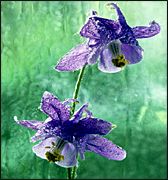Whether you accept it, avoid it or live somewhere in between, insurance coverage has become a defining issue for our profession. Patients increasingly expect to use their benefits, practitioners want to be compensated fairly for their time and expertise, and the system itself remains – at best – fragmented. The encouraging news is that coverage has expanded in meaningful ways. The challenging news is that reimbursement, across the board, remains inadequate.
Herbs & Botanicals
Honeysuckle Stem (ren dong teng)
What is honeysuckle stem? What is it used for?
There are approximately 200 species of honeysuckle that grow worldwide, all of which belong to the genus Lonicera, of the family Caprifoliaceae. Although they are usually found in the temperate zones, honeysuckle has also been known to grow in the Himalayas and southern Asia.
The Japanese honeysuckle (Lonicera japonica) is used in traditional Chinese medicine, and will be discussed in this article. It has short, green stems, fragrant, yellow-white flowers and black berries.
Different parts of the honeysuckle are used to treat different conditions. This article discusses the properties of honeysuckle stem; honeysuckle flower is discussed in a related article. The stems are gathered in autumn or winter.
 Honeysuckle stem contains a variety of chemical compounds, including chlorogenic acid and isochlorigenic acid. In traditional Chinese medicine, honeysuckle is associated with the Heart and Lung meridians, and has sweet and cold properties. Its functions are to clear away heat and toxins, and to unblock the meridians, allowing for the free flow of qi. It is often used to treat fevers and febrile diseases, along with sores, dysentery, and numbness in the limbs due to rheumatic fever. Honeysuckle stem is often used with other herbs, such as dandelion, mulberry and forsythia.
Honeysuckle stem contains a variety of chemical compounds, including chlorogenic acid and isochlorigenic acid. In traditional Chinese medicine, honeysuckle is associated with the Heart and Lung meridians, and has sweet and cold properties. Its functions are to clear away heat and toxins, and to unblock the meridians, allowing for the free flow of qi. It is often used to treat fevers and febrile diseases, along with sores, dysentery, and numbness in the limbs due to rheumatic fever. Honeysuckle stem is often used with other herbs, such as dandelion, mulberry and forsythia.
How much honeysuckle stem should I take?
The typical dose of honeysuckle stem is between 16 and 20 grams, taken in a decoction for oral use. Honeysuckle stem can also be applied externally as part of a poultice to treat swollen joints and rheumatic conditions.
What forms of honeysuckle stem are available?
Fresh or dried honeysuckle stem can be found at most Asian markets, herbal shops and specialty stores. Honeysuckle stem can also be found as a powder or decoction.
What can happen if I take too much honeysuckle stem? Are there any interactions I should be aware of? What precautions should I take?
The stems and leaves of honeysuckle contain substances called saponins, which are poorly absorbed by the human body but can be dangerous if taken in extreme amounts. As of this writing, there are no known drug interactions with honeysuckle stem. As always, make sure to consult with a licensed health care provider before taking honeysuckle stem or any other herbal remedy or dietary supplement.
References
- Editorial Committee of Chinese Materia Medica. State Drug Administration of China. Chinese Materia Medica. Shanghai: Science and Techonology Press, 1998.
- Fan JQ, et al. Guangzhou Journal of Medicine 1998;29(3):59-62.
- Long SJ, et al. Journal of Chinese Materia Medica 1999;30(1):40-43.
- Wang SP, et al. Journal of Popular Medicine of Chinese Ethnic Minorities 1998;(5):40-41.
- Yang L. Zhejiang Journal of Traditional Chinese Medicine 1998;33(6):282.


